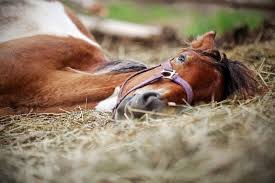First Aid for Horses: Shock
Do you know the signs of shock?
Have you ever seen a horse in shock?
I have.
You may have as well, but didn’t realise what you were looking at.
Shock in horses is very much like it is for humans. It is the bodies way of coping with imminent death, where we end up with a sudden decrease in both blood circulation and blood pressure.
Shock, untreated, can kill.
It can be very subtle or extremely obvious when a horse goes into shock.
What causes shock?
Shock can occur for several reasons:
Blood loss
Severe pain, such as colic or an injury
Septic shock from an infection turned toxic
Dehydration
Severe allergic reaction
Extreme response to fear or emotional trauma
What are the symptoms of shock?
Healthy, pink gums. Horses in shock will usually have a white or grey appearance in their gums, with the exception of septic shock.
A horse that is in shock may display several of these symptoms
Pale mucus membranes (such as the gums, nostrils and eyelids), leaning towards white or grey in colour as opposed to a healthy pink. Septic shock can show up as bright red gums, or with a purple tinge to the gums near the teeth.
Slow capillary refill time. To test this, hold your thumb or finger on the gum and press for a few seconds. This should leave a white mark. Then count how long it takes for the colour to return to normal. Healthy capillary refill time is under 2 seconds.
Depression
Shivering, cool to touch
Rapid weak pulse (particularly if it’s over 80 beats per minute)
Rapid breathing that is shallow
Profuse sweating
Anxiety or confusion
Temperature may be low (but not always)
The horse may lie down
What to do if I suspect my horse is in shock?
This, and I cannot stress this enough, is a serious emergency. It is time to get your vet to your horse NOW– not in 5 minutes, not in an hour.
Identify if there are any suspicious signs, such as an injury, or bleeding, and ask the vet what you can do. The more information you can provide your vet, the more likely they are to triage your emergency as the highest priority and bust a tail to get to your paddock.
There is little else you can do until the vet arrives. If your horse is cold or shivering, you may cover the horse with a blanket to try to keep their temperature regulated, but be aware they can just as quickly overheat in this situation. Stay with your horse and continue to monitor the situation, keeping them as calm as possible. If you can, relocate them to a safe location such as a barn or feeding yards, and place a halter on them. You may be able to offer them some water.
Once your vet arrives, they will assess and advise you of the best course of action. Depending on the likely cause of the problem, they may suggest anything from intravenous fluids (a drip), electrolyte injections, or other medications, as well as stemming any major haemorrhage if blood loss is the cause of shock. Their primary goal is to first stabilise the shock, then act on treatment accordingly.
Remember, shock can kill. Understand the signs and you could save your horses life.
Looking for more specific content?
Have a question you are seeking answers to? Send us a message and we will create a blog!


